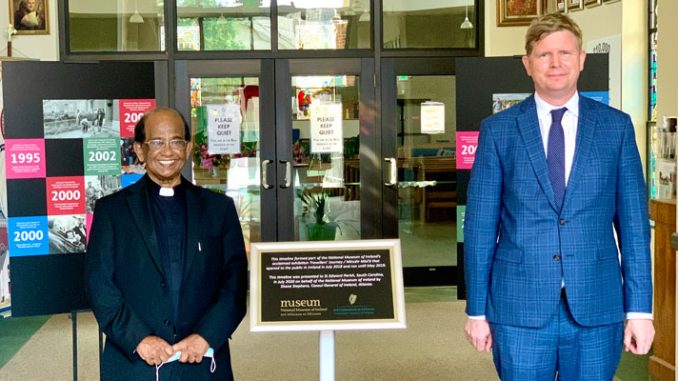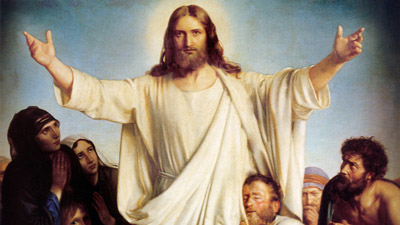
NORTH AUGUSTA—Worshipers who enter St. Edward Church in Murphy Village for prayer or Mass these days can also get a crash course in Irish Traveler history.
An exhibit on the history of the Travelers was presented to the parish in late July by Shane Stephens, the consul general of Ireland. Stephens visited St. Edward many times while he was based in Atlanta and became interested in the Irish Traveler community that it serves.
St. Edward, which was founded in 1964, ministers to more than 500 families of Irish Travelers who live in nearby Murphy Village off S.C. 25. The Village is one of the largest settlements of the Travelers in the country.
Displayed around the narthex, the exhibit includes panels that chronicle the history of Travelers in Ireland, from the Middle Ages through 2017, when Ireland officially recognized them as a separate ethnic group.
The exhibit was originally displayed at the National Museum of Ireland and this is the first time it has been available for viewing in the United States.
Carmelite Father Cherian Thalakulam, pastor at St. Edward since 2002, said Stephens arranged for the exhibit to come to St. Edward because he had formed a relationship with the parish. Stephens was interested in Murphy Village community’s Irish roots and visited several times with his wife and family to attend Mass there. He also brought friends from Ireland to visit the parish.

Murphy Village’s large population of Irish Travelers are descendants of those who first emigrated in the 1840s, fleeing the potato famine in Ireland. Many of them settled in the South because the mild weather suited their traditional nomadic lifestyle, traveling the country seeking work.
According to published histories of Murphy Village, Travelers first settled in South Carolina, primarily in the North Augusta area, after the Civil War, and the population grew over the years. In 1948, Father Joseph J. Murphy, who was pastor of Our Lady of Peace Church in North Augusta, started celebrating Mass outside on Sundays for the Travelers who lived there. He arranged for the purchase of land which became the permanent settlement of Murphy Village. Construction on the first St. Edward Church began in 1964 and was dedicated by Bishop Ernest L. Unterkoefler in April 1965. The current church was dedicated in 1997 by Bishop David B. Thompson.
A look at the exhibit shows the evolution of how Travelers have been treated in Ireland. It begins in 1173 when the term “Tinker” was first recorded as a name for the Travelers. The word originally referred to workers who traveled from place to place mending pots and other metal objects, which was one of the jobs that Travelers were known for.
The exhibit chronicles the Travelers journey, and includes highlights such as in 1982, when Nan Joyce became the first Traveler to run in a national election. In 1990, the Irish Traveler Movement was founded to promote their rights and cultural identity, and in 2000 the Equal Status Act in Ireland recognized the distinct Traveler culture.
Still, equality was slow coming and other panels show how Ireland was criticized by the United Nations during the 2000s for discriminating against Travelers. Finally, in 2017, Ireland recognized Travelers as a distinct ethnic group.
Father Thalakulam said the exhibit will remain on display at the church until it is eventually moved to the parish’s new family life center, which is almost complete.
The Irish Traveler exhibit will be a permanent additon.

